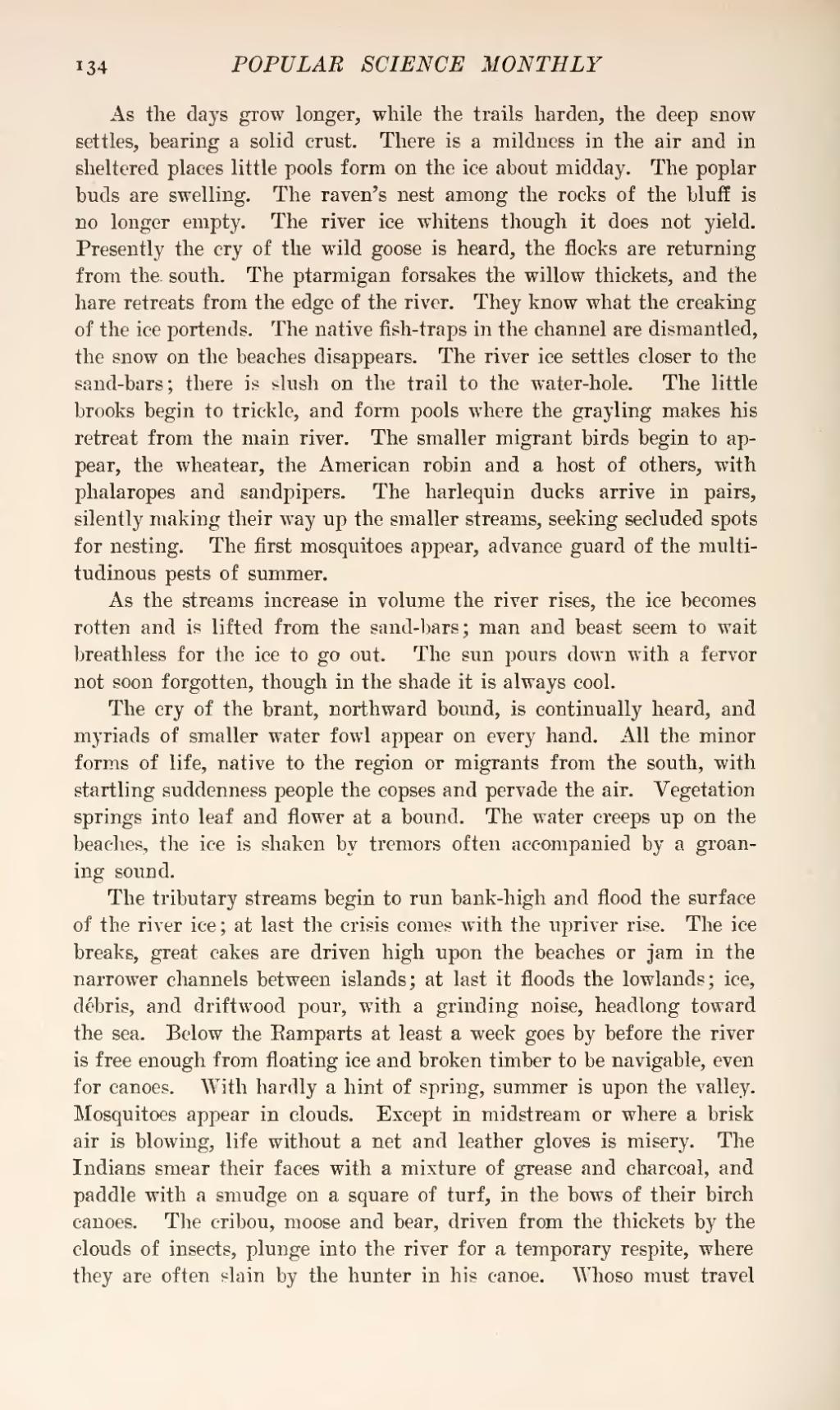As the days grow longer, while the trails harden, the deep snow settles, bearing a solid crust. There is a mildness in the air and in sheltered places little pools form on the ice about midday. The poplar buds are swelling. The raven's nest among the rocks of the bluff is no longer empty. The river ice whitens though it does not yield. Presently the cry of the wild goose is heard, the flocks are returning from the. south. The ptarmigan forsakes the willow thickets, and the hare retreats from the edge of the river. They know what the creaking of the ice portends. The native fish-traps in the channel are dismantled, the snow on the beaches disappears. The river ice settles closer to the sand-bars; there is slush on the trail to the water-hole. The little brooks begin to trickle, and form pools where the grayling makes his retreat from the main river. The smaller migrant birds begin to appear, the wheatear, the American robin and a host of others, with phalaropes and sandpipers. The harlequin ducks arrive in pairs, silently making their way up the smaller streams, seeking secluded spots for nesting. The first mosquitoes appear, advance guard of the multitudinous pests of summer.
As the streams increase in volume the river rises, the ice becomes rotten and is lifted from the sand-bars; man and beast seem to wait breathless for the ice to go out. The sun pours down with a fervor not soon forgotten, though in the shade it is always cool.
The cry of the brant, northward bound, is continually heard, and myriads of smaller water fowl appear on every hand. All the minor forms of life, native to the region or migrants from the south, with startling suddenness people the copses and pervade the air. Vegetation springs into leaf and flower at a bound. The water creeps up on the beaches, the ice is shaken by tremors often accompanied by a groaning sound.
The tributary streams begin to run bank-high and flood the surface of the river ice; at last the crisis comes with the upriver rise. The ice breaks, great cakes are driven high upon the beaches or jam in the narrower channels between islands; at last it floods the lowlands; ice, debris, and driftwood pour, with a grinding noise, headlong toward the sea. Below the Ramparts at least a week goes by before the river is free enough from floating ice and broken timber to be navigable, even for canoes. With hardly a hint of spring, summer is upon the valley. Mosquitoes appear in clouds. Except in midstream or where a brisk air is blowing, life without a net and leather gloves is misery. The Indians smear their faces with a mixture of grease and charcoal, and paddle with a smudge on a square of turf, in the bows of their birch canoes. The cribou, moose and bear, driven from the thickets by the clouds of insects, plunge into the river for a temporary respite, where they are often slain by the hunter in his canoe. Whoso must travel
